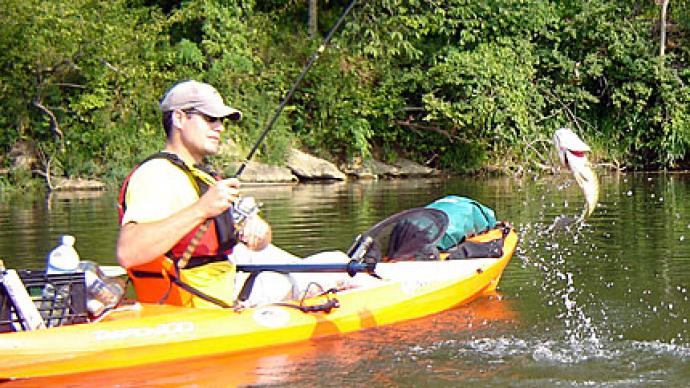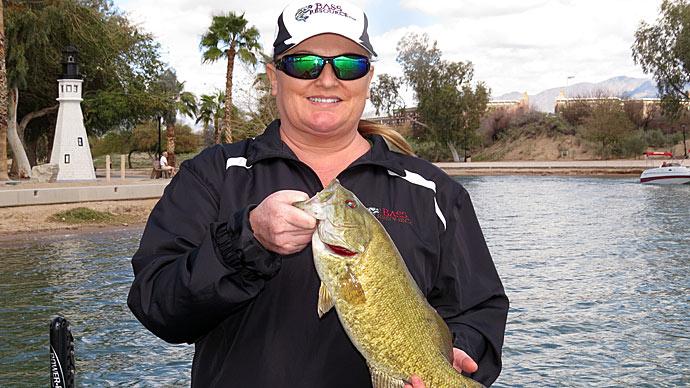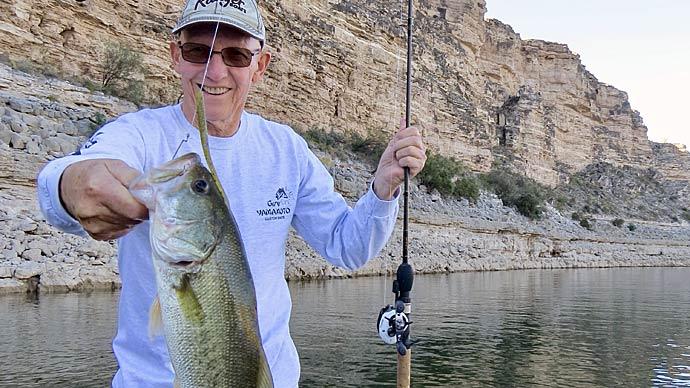
The Livewell combines an artificial lake environment, a traveling aquarium, a fish motel, the emergency room, and a source of bragging rights.
Before the advent of catch-and-release for bass anglers, we did not have livewells in the average fisherman's boat did not have livewells. Many used a stringer over the side of the boat. A well-equipped angler had the most: a large cooler with lots of ice. After all, most fish went to the freezer anyway.
As tournament fishing gained popularity and the fishing pressures increased, the catch-and-release concept quickly gained solid support, first from tournament anglers and later from weekend anglers. The spirit of catch-and-release included penalties for dead fish. This prompted improvements in livewell equipment and configuration, as well as water conditioners and additives, to increase the chance that the fish arrived at the weigh-in healthy and "kicking."
So you ask yourself, how does my livewell stack up? Or you may be in the market for that next boat. What should you look for in a high-quality livewell? What features should be there? If you already have a livewell, do I have to live with built-in problems, or can I improve it?
First, start with water volume. Do you know how many gallons it holds? Simply put, the more water, the better. Increasing the volume increases the dispersion of waste products produced by the fish, increases the potentially available oxygen by increasing the amount of water to contain it (increased carrying capacity), and provides more space for fish to occupy without overcrowding, which can decrease physiological stress and mutually inflicted injuries. Pay attention to whether the livewell has sufficient depth for the fish (significantly larger ones) to comfortably remain upright instead of lying on their sides, which is not a natural position for them. Shallow livewells don't do as well, especially as you bounce around on the waves (which bounces the fish, too).
Next, look for at least a dual pumping system. Again, more is better. You should have a filling pump for fresh water and a recirculating or aeration pump. Both should have automated and manual operating modes. Get the bigger or higher volume pumps to move more water. Aerating pumps that pump air into the stream of water are better than those that only pump water because they increase the air/water surface interface where the oxygen molecules mix into the water. If you can, have extra pumps installed. There is always the possibility of a breakdown, and a spare pump could make the difference between dead fish and live ones.
Make sure that the pipes and plumbing for the livewell are adequate. If the tubing is too small, foreign objects (like those regurgitated stomach contents) could clog the flow and hamper its proper function. Check them during the day to ensure that water flows as expected. Carry a hose or hand pump to backflush drain tubes if they get clogged. A small fish net (like in aquarium stores) can extract floating debris (or regurgitated stuff, yuck!!) from the livewell.
Check the livewell for sharp objects or poor construction that leaves burrs and splinters, which can harm fish. Check the circulation holes in your livewell partition (if you have one) to ensure the edges are not sharp. Use an Emory cloth to smooth out exposed edges in plastic. Buff down any exposed fiberglass that feels rough. Check all screws, rivets, and seams in metal fittings and fixtures. File down anything rough. Any rough edge that cannot be filed down should be protected with a coating of Silicon Caulking. Be sure you use the kind sold in the aquarium stores to prevent using a toxic compound (don't just buy it at the hardware store because it's cheaper; you might be substituting one problem for another). Feel with your hands up under the lids and any areas you cannot visually inspect. I once put my hand in a back corner behind the lid and under the deck when I pulled my hand back due to experiencing sharp pain. I was bleeding in four places!! There was raw fiberglass back there!! To top it off, this was in a brand new, beautiful, high-end Hydro Blaster!! It's not a good idea if you want to keep those fish healthy. Check, check, and when you're done, check again. Lids should be padded on the inside. When you're done with your livewell retrofit (or purchasing inspection), you should have satisfied yourself that you could put your baby sister in that livewell (Now I meant when she was a baby, come on, guys!!!!) without any chance of injury.
Taking Care Of Your Livewell
What do you do with your livewell when it's not in use? Do you store the boat in the carport or the garage, or does it stay outdoors? When a livewell is "put away," it can become a problem. Many anglers, pressured by time and their many chores, are hurrying to put up the boat and get back to their other priorities. This frequently means that the livewell is closed while still wet inside. Water in the fill tubes and bottom of the livewell become growth tanks for bacteria and fungus. Fish slime and regurgitated stomach contents coat the surfaces and become growth media for the bacteria and other nasty critters. Closed livewell temperatures rise and increase the growth. The next time the angler uses the boat, the livewell is frequently does not open up until the first bass is caught!! You start filling the well and plopping in the fish, not realizing that you've put the fish into a toxic and dangerous environment. The result is more stress to the fish, more fish that die before the weigh-in, and, even more importantly, more delayed mortality. The fish are released alive, but they've been infected with bacteria and fungal agents, contributing to a slow and relentless death later on the bottom of the lake.
So what can you do about this? Start with ensuring that the Livewell is always dry before storing the boat. If there are apparent stomach contents, fish slime, or residues on the sides of the livewell, ensure you rinse the insides thoroughly and get those contaminants out. Wash your livewell with an anti-bacterial soap periodically to sterilize the interior. Remember to do a good job rinsing out the cleaning agents before drying out the interior. If you blast it with the hose and any bubbles form, you must rinse again. Prop your livewell doors open to help air circulate in the interior and keep it dry.
Once you launch the boat and are motoring in clean water, open the valves and fill the livewell with cool lake water. Don't wait until you have a fish to fill it up. This additional rinsing also cleanses the interior to help the fish survive. Lastly, always use a commercially prepared livewell treatment. These products (several on the market) typically do different things for you and the fish. They stimulate slime production, anesthetize the fish to control their stress levels, and prevent them from injuring themselves in the livewell. They also contain anti-bacterial and anti-fungal agents, stabilize the pH, and buffer the water. They can even help to heal hook wounds and treat pre-existing injuries and skin infections.
Your livewell is not just a bucket of water to hold fish destined for the frying pan. Take your livewell to the next level. The knowledgeable angler wants to ensure that catch-and-release works. Take care of your livewell, and it will take care of your fish and you!!
Keep your lines tight and your spirits light!
Ed Telders
Washington Warmwater Specialist Field Staff




